The workplace hasn’t been more exciting than it is now with these contemporary office design trends.

The offices of Northern Trust in Chicago with its functional spaces, community areas, moveable desk, walls and power sources, is a great model of the emerging modern office. Photo: Courtesy of Office Snapshots (Photographer: Kendall McCaugherty)
We have come a long way from the offices of the 1930s to 1950s when workstations were typically lined up in a row and in close quarters with each other, and surrounded by next to nothing in terms of office comforts that we have today. Up until the 1990s, the office was fairly conventional in design and while it had changed considerably since the “old days”, it still possessed the underlying qualities that made its predecessors uninspired..
The turning point came in the early 2000s with the unveiling of the iconic Google headquarters, which forever altered our collective concept of the workplace. Its juxtaposition of work and play, not only unheard of but a big no-no at the time was groundbreaking. It inspired conversations and research into what actually makes an office tick and if adding certain spaces like a gym, lounge or game room can promote productivity, creativity and wellbeing or even attract the best talents.
Today, it is commonplace to find workplaces with unconventional spaces along with workstations and conference rooms such as recreational areas, lounges or cafes. The office layout has also transformed with many modern offices opting for the open floor plan in place of cubicles. In recent years, even more fresh and innovative office design concepts have emerged. Here are some of the popular as well as growing trends in office design:
Activity-Based Workplace

Activity-based workplace is growing in favour compared to the conventional modern office, for its flexibility and diversity that cater to various types of tasks. Coworking spaces are a good example of an activity-based workspace such as this WeWork Coworking Space in Vancouver Photo credit: Courtesy of GoToVan.
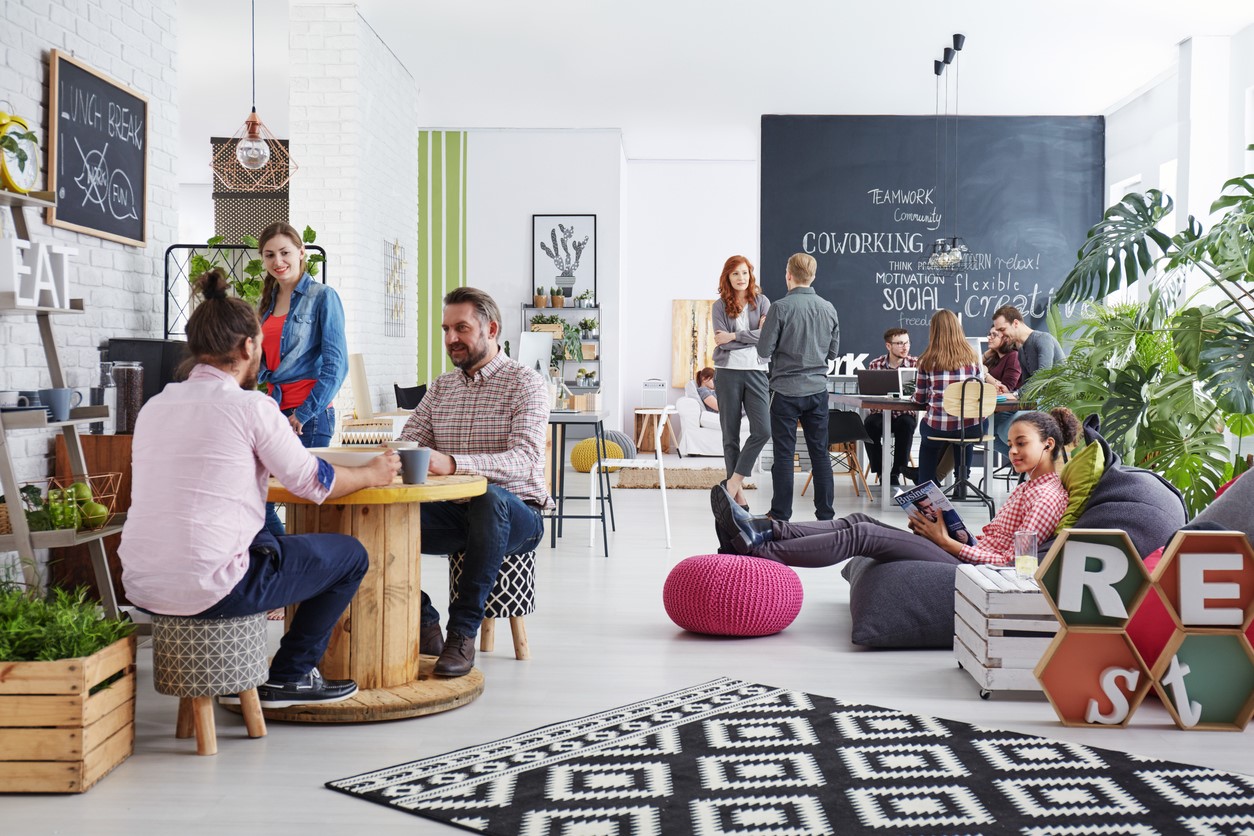
An activity-based workplace is made up of a variety of spaces that can be used for specific tasks or according to the employees’ personal style of working. Photo credit: Katarzyna Bialasiewicz.
Workplaces are gradually opening up to the idea of resimercial design – merging residential and commercial interior design and aesthetics to create a ‘home-feel’ in the workspace. This is exemplified by the activity-based workplace, an office that comprises a variety of spaces for employees such as a collaborative area, private nook, lounge and recreational room. The objective behind this concept is to provide employees with ideal spaces that are conducive for specific tasks like collaboration, video-conferencing or individual work and to provide the needs of the whole person such as for their downtime or recreation, thus, increasing productivity, inspiring creativity and promoting happiness. For example, a day for an employee in an activity-based office can go from a half-day high-energy creative session at the collaboration space to a private booth to finish up some work that requires high concentration and then to the cafe for a meeting over coffee or to the game room for a break. The ‘home-feel’ is also a great stress-reliever with its cosy and warm features like comfortable seating, wool rugs, natural lighting and house plants.
Besides the disruption and lack of privacy of an open floor plan and the feeling of isolation resulting from working in cubicles, the activity-based concept is growing in popularity because of increasing understanding that one type of space isn’t practical for every task or necessarily fits our personal working style. It is also an environment favoured by millenials and Gen Z, who are growing into a significant percentage of the workforce. Of all the latest office designs, the activity-based workplace is most likely to become mainstream and replace the conventional modern workplace.
A typical activity-based workplace has the following spaces: collaborative space, work benches, booths, private nooks, lounge areas and café.
Flexible Workplace
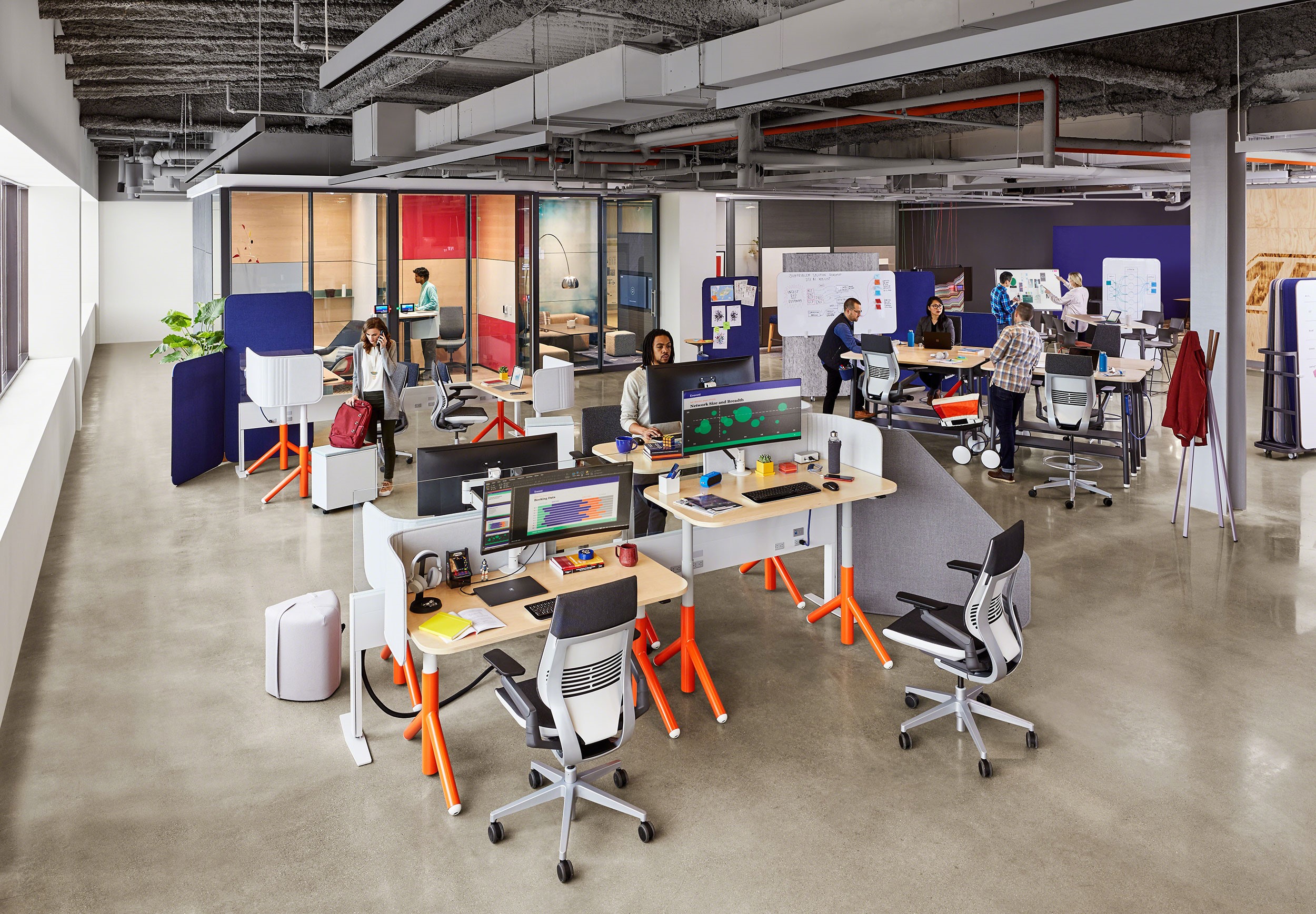
A flexible workspace is primarily defined by its furniture, which can be moved, reshaped or resized according to employees needs. Photo credit: Courtesy of Steelcase
Similar to the activity-based concept, the flexible workspace is about providing freedom to employees, the only difference is it enables them to adapt their environment to their needs. So instead of employees moving from one space to another, the furniture is moved around and reorganised according to the tasks. To allow this to happen, flexible workspaces have desks, tables, and chairs on wheels so it is movable; and modular furniture which can be detached and resized. Most suitable for companies that are stationed on one open floor, it allows its employees to completely transform the room when they need to collaborate, have meetings or for individual work. It is also a great fit for a small office space that doesn’t have much room to have defined spaces or companies that are opting to partly run remotely, with only a percentage of their staff coming into the office at a given time for collaboration work or meetings.
A typical flexible office is characterised by furniture on wheels whether its desks, chairs, presentation boards and even partitions as well as modular furniture, which can be disassembled and re-arranged according to the employees’ needs.
Biophilic Office
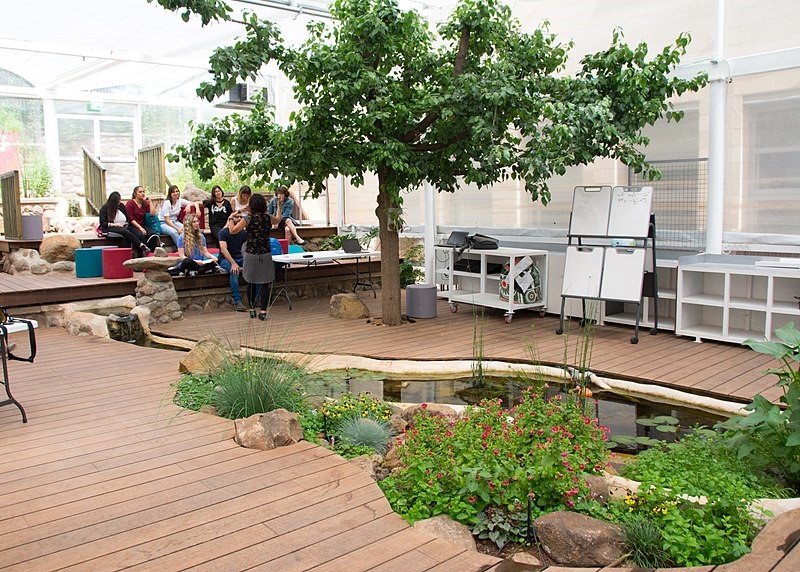
Biophilic design incorporates nature in the workplace, turning the space into an oasis with natural light, greenery, water and other natural elements. Photo of Ohalo Biophilic Learning Space. Photo credit: Courtesy of Ohalo123.
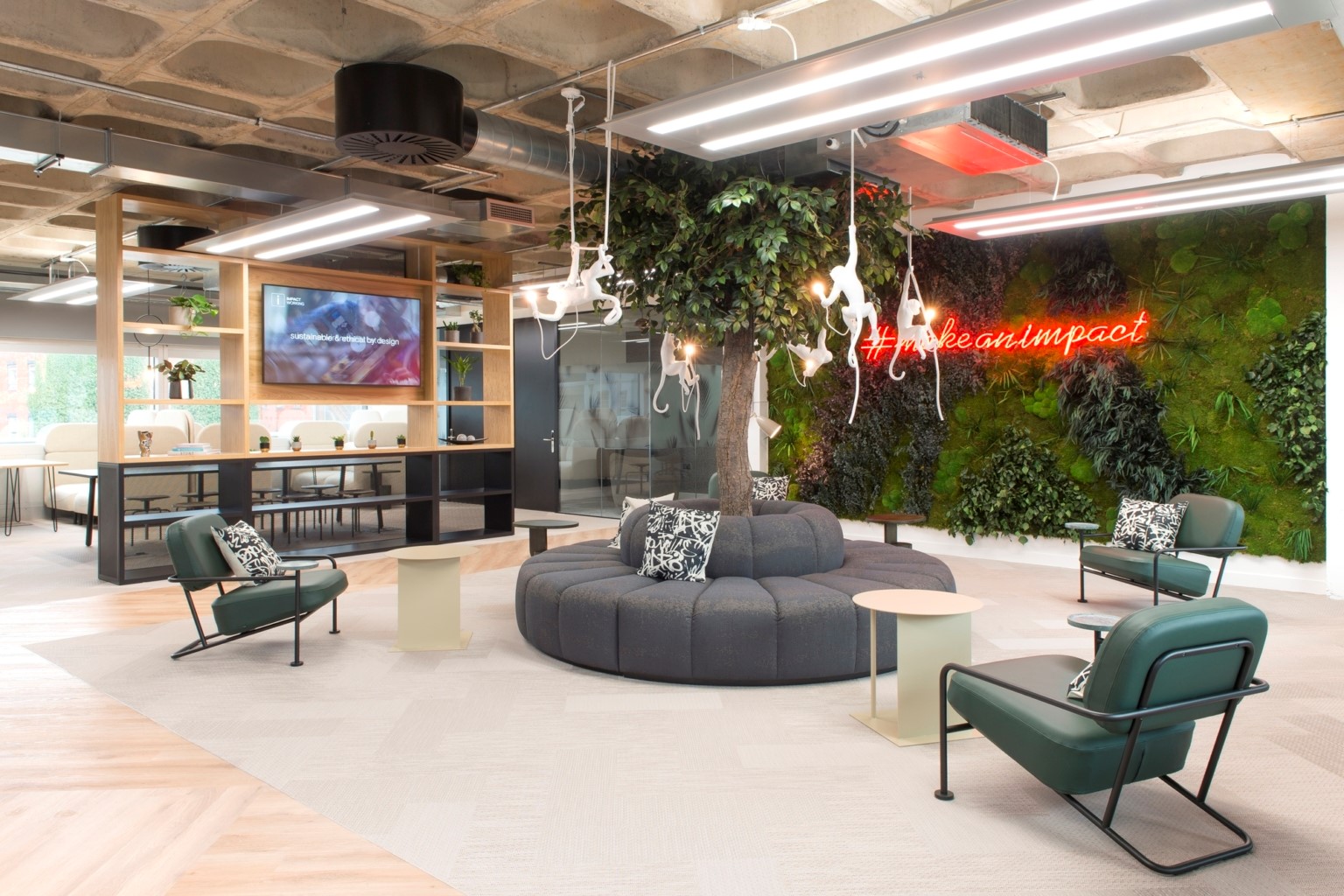
Green walls and hanging plants are popular features in biophilic-design offices. Photo: Courtesy of: Echospace
Not to be confused with green or sustainable design, the biophilic concept is more about bringing nature into the workspace. Sustainable design practices can be incorporated into a biophilic-design space but it is not a requisite. The idea of biophilic design is based on the knowledge that humans have an innate relationship with nature. It’s a connection that is important to our overall wellbeing and thus, impacts all aspects of our life. As work in the modern world is generally based indoors and usually for long hours, with very little to no exposure to sunlight or natural environment in between, it can have a negative impact on our health.
In a biophilic-design workplace, nature is brought indoors where at the very least natural light, greenery and flowing water are incorporated or is central to the space. Some of the most common features used in biophilic-design spaces are large windows, green walls, hanging plants and water features. Besides improving or maintaining the overall wellbeing of employees, the biophilic design is also said to promote less stress, better concentration, increased creativity and improved work performance.
A typical biophilic office includes: natural light, water, greenery, views of nature, furniture and décor made out of natural materials like wood and stone as well as colours like green, blue and yellow.
Sustainable Office Design
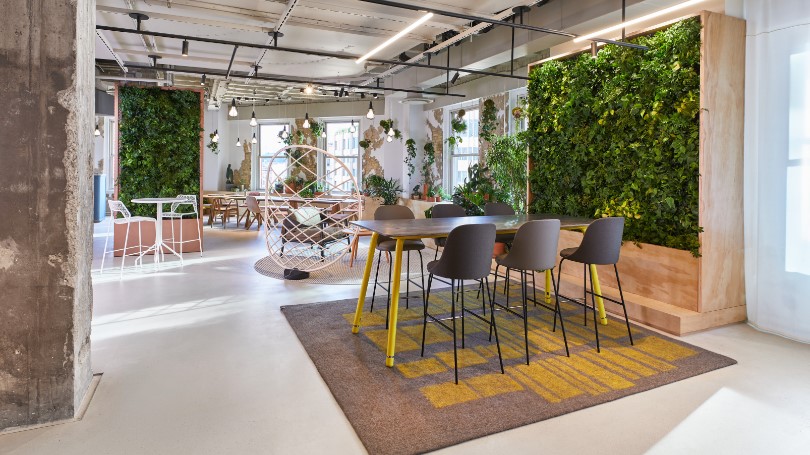
A sustainable office prioritises reducing the company’s carbon footprint in every aspect through clever design that uses energy and water efficiently and organically encourages sustainable practices among employees. Photo credit: Courtesy of Steelcase
By incorporating sustainable design practices, materials and construction, a sustainable office design is about comprehensively reducing a company’s carbon footprint. Besides design practices that reduces the building’s energy usage and waste, limiting the use of virgin materials in favour of repurposed building components, furniture and appliances, it is also about naturally encouraging sustainable habits in the workplace and beyond such as offering employees incentives for eco-friendly commute to work, providing only seasonal foods in the pantry or cafeteria, promoting use of reusable coffee cups and going paperless. While the design prioritises systems and materials that are energy efficient and low emission as well as taking full advantage of natural resources like sunlight and rainwater, it does not necessarily sacrifice aesthetics and comfort with increasing availability of beautifully designed furniture made from 100% recycled plastic or using recycled or organic upholstery.
A typical sustainable office includes: energy-efficient lighting system, water-saving bathroom fixtures, eco-friendly rubbish disposal, repurposed furniture, natural light and passive ventilation and energy-saving appliances.


